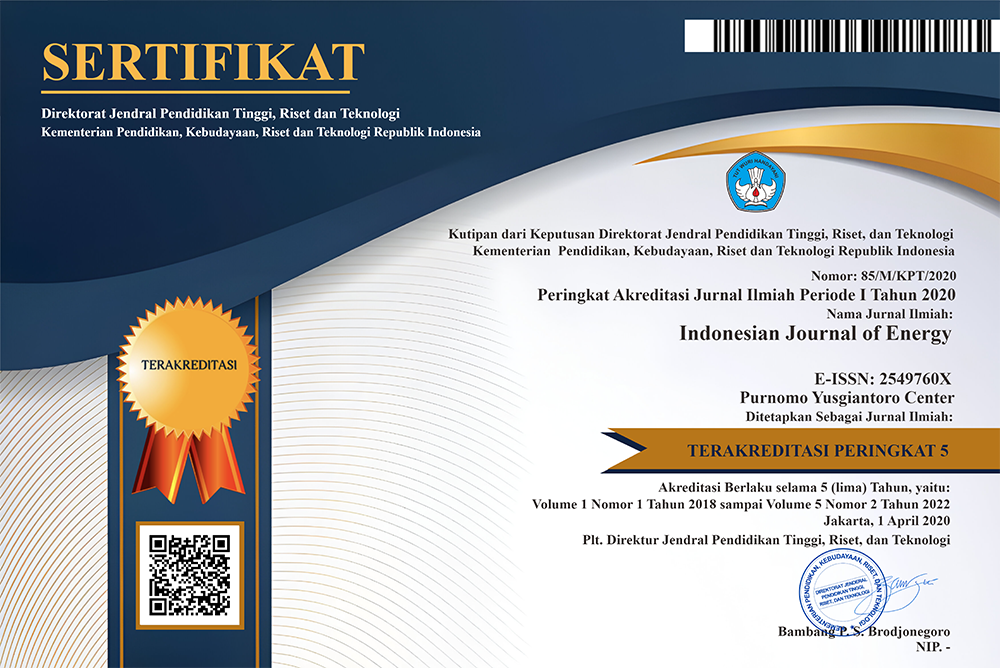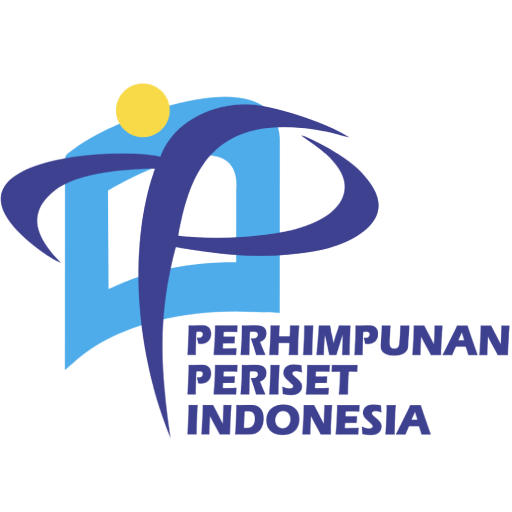Planning the Electrification of Rural Villages in East Nusa Tenggara Using Renewable Energy Generation
Abstract
Providing accessible, affordable and renewable electricity to rural areas in developing countries like Indonesia, is arguably challenging. The higher initial cost of renewable, as compared to conventional energy technologies, is often viewed as an obstacle in the rural electrification decision-making process. This study is conducted to examine the techno-economic feasibility of renewable energy generation options to bring electricity to the rural villages in Indonesia with Belu Regency, East Nusa Tenggara (ENT) as a case study. In this study, three village electrification scenarios were generated: basic (with the demand load of 150,5 kWh/day), moderate (359,9 kWh/day) and advanced electrification (579 kWh/day). To supply the load, three energy technologies were compared: conventional technology (diesel-powered); renewables technology (solar PV, and wind turbines); and hybrid technology (combination of diesel, solar PV and wind). The Hybrid Optimization of Multiple Energy Resource (HOMER) software was selected to model the best-optimised system configuration for the scenarios with defined constraints and sensitivity analysis. The study also investigates the impact and benefit of each system on the environment, specifically on CO2 emissions and pricing options. The results found that the renewable energy village-grid system (mostly powered by solar PV) is more competitive than the diesel-powered system in all scenarios. The levelized cost of energy (LCOE) of renewable energy system for each scenario is 0,66 USD/kWh (basic), 0,74 USD/kWh (moderate) and 0,55 USD/kWh (advance) respectively. This preliminary study concludes that rural electrification with renewables is a feasible option for a generic, modeled village in ENT. More, specific case research would be needed.
JEL Classification: Q42, Q54
Downloads
References
Ackermann, T., Andersson, G., & Söder, L. (2001). Distributed generation: A definition1. Electric Power Systems Research, 57(3), 195-204. doi:http://dx.doi.org.ezproxy.auckland.ac.nz/10.1016/S0378-7796(01)00101-8
Akinyele, D. O., & Rayudu, R.K. (2016). Community-based hybrid electricity supply system: A practical and comparative approach. Applied Energy, 171(1), 608-628. http://dx.doi.org/10.1016/j.apenergy.2016.03.031
Alam, M., & Bhattacharyya, S. (2016). Decentralized Renewable Hybrid Mini-Grids for Sustainable Electrification of the Off-Grid Coastal Areas of Bangladesh. Energies, 9(1), 268-284. doi:10.3390/en9040268
Blum, N. U., Wakeling, R. S., & Schmidt, T. S. (2013). Rural electrification through village grids—Assessing the cost competitiveness of isolated renewable energy technologies in Indonesia. Renewable and Sustainable Energy Reviews, 22(1), 482–496. http://dx.doi.org/10.1016/j.rser.2013.01.049
Brass, J. N., Carley, S., MacLean, L. M., & Baldwin, E. (2012). Power for Development: A Review of Distributed Generation Projects in the Developing World. Annual Review of Environment and Resources, 37(1), 107-136. doi: 10.1146/annurev-environ-051112-111930
Casillas, C. E., & Kammen, D. M. (2011). The delivery of low-cost, low-carbon, rural energy services. Energy Policy, 39 (8), 4520-4528. doi:10.1016/j.enpol.2011.04.018
Chaurey, A., & Kandpal, T. C. (2010). Assessment and evaluation of PV based decentralized rural electrification: An overview. Renewable and Sustainable Energy Reviews, 14(8), 2266-2278. http://dx.doi.org/10.1016/j.rser.2010.04.005
Developing Indonesian Climate Mitigation Policy 2020 – 2030 Through RAN-GRK Review. (2015). Jakarta: Ministry of National Development Planning of the Republic of Indonesia. Retrieved from http://paklim.org/index.php/publication/studies-and-reports/item/247-developing-indonesian-climate-mitigation-policy-2020-2030-through-ran-grk-review.html
East Nusa Tenggara Dashboard of PEP PPRK Online System. (2017, Nov. 17). Jakarta, Indonesia: Ministry of National Development Planning of the Republic of Indonesia (MNDP). Retrieved from http://pep.pprk.bappenas.go.id/dashboard/
East Nusa Tenggara in Figures 2017. (2017). Kupang, Indonesia: Badan Pusat Statistik Provinsi Nusa Tenggara Timur (BPS NTT) [Statistics of East Nusa Tenggara Province]. Retrieved from https://ntt.bps.go.id/index.php/publikasi/478
Electricity Statistic 2015. (2016). Jakarta: Ministry of Energy and Mineral Resources of the Republic of Indonesia (MEMR). Retrieved from http://www.djk.esdm.go.id/index.php/statistik-ketenagalistrikan.
Feibel, H. (2010). How micro hydro power systems implemented during ENDEV 1 are performing. St. Gallen, Switzerland: entec ag and GTZ (Deutsche Gesellschaft für Technische Zusammenarbeit). Retrieved from https://energypedia.info/wiki/File:How_MHP_systems_implemented_under_EnDev1_Indonesia_are_performing_(November_2010)_-_GTZ_Indonesia_-_November_2010.pdf
Hiendro, A., Kurnianto, R., Rajagukguk, M., Simanjuntak, Y. M., & Junaidi. (2013). Techno-economic analysis of photovoltaic/wind hybrid system for onshore/remote area in Indonesia. Energy, 59(1), 652-657. http://dx.doi.org/10.1016/j.energy.2013.06.005
Indonesia Electrification Ratio [Image file, Indonesia Electrification Ratio Infographic: June 2017]. (2017). Jakarta, Indonesia: Ministry of Energy and Mineral Resources of the Republic of Indonesia (MEMR). Retrieved from https://www.esdm.go.id/assets/media/content/content-rasio-elektrifikasi-indonesia-status-juni-2017.pdf
Jenkins, N., Ekanayake, J. B., & Strbac, G. (2010). Distributed Generation. Retrieved from http://app.knovel.com/web/toc.v/cid:kpDG000002
Key World Energy Statistics 2017. (2017). International Energy Agency (IEA). Paris: International Energy Agency. Retrieved from http://www.iea.org/publications/freepublications/publication/key-world-energy-statistics.html
Kusakana, K., & Vermaak, H. J. (2014). Hybrid diesel generator/renewable energy system performance modelling. Renewable Energy, 67(1), 97-102. http://dx.doi.org/10.1016/j.renene.2013.11.025
Lambert, T., Gilman, P., & Lilienthal, P. (2006). Micro power system modelling with HOMER. In F. A. Farret & M. G. Simões (Eds.), Integration of Alternative Sources of Energy (pp. 379-418). doi: 10.1002/0471755621.ch15
Open Energy Information. (2015, Jan. 20). HOMER. Retrieved from http://en.openei.org/wiki/HOMER
Rencana Usaha Penyediaan Tenaga Listrik 2017 – 2026 [Electricity Supply Business Plan 2017 – 2026]. (2017). Jakarta: Perusahaan Listrik Negara (PLN) [State-owned Electricity Company]. Retrieved from http://www.djk.esdm.go.id/index.php/rencana-ketenagalistrikan/ruptl-pln
Soeharwinto. (2016, September 14). “USAID ICED PLEA Project.” [HOMER File].
Surface Meteorology and Solar Energy (SSE) Data and Information [Data set] (2006). USA: National Aeronautics and Space Administration (NASA), Langley Research Center, Atmospheric Science Data Center. Retrieved from http://eosweb.larc.nasa.gov/project/sse/sse_table
van Ruijven, B. J., Schers, J., & van Vuuren, D. P. (2012). Model-based scenarios for rural electrification in developing countries. Energy, 38(1), 386-397. doi:10.1016/j.energy.2011.11.037
















